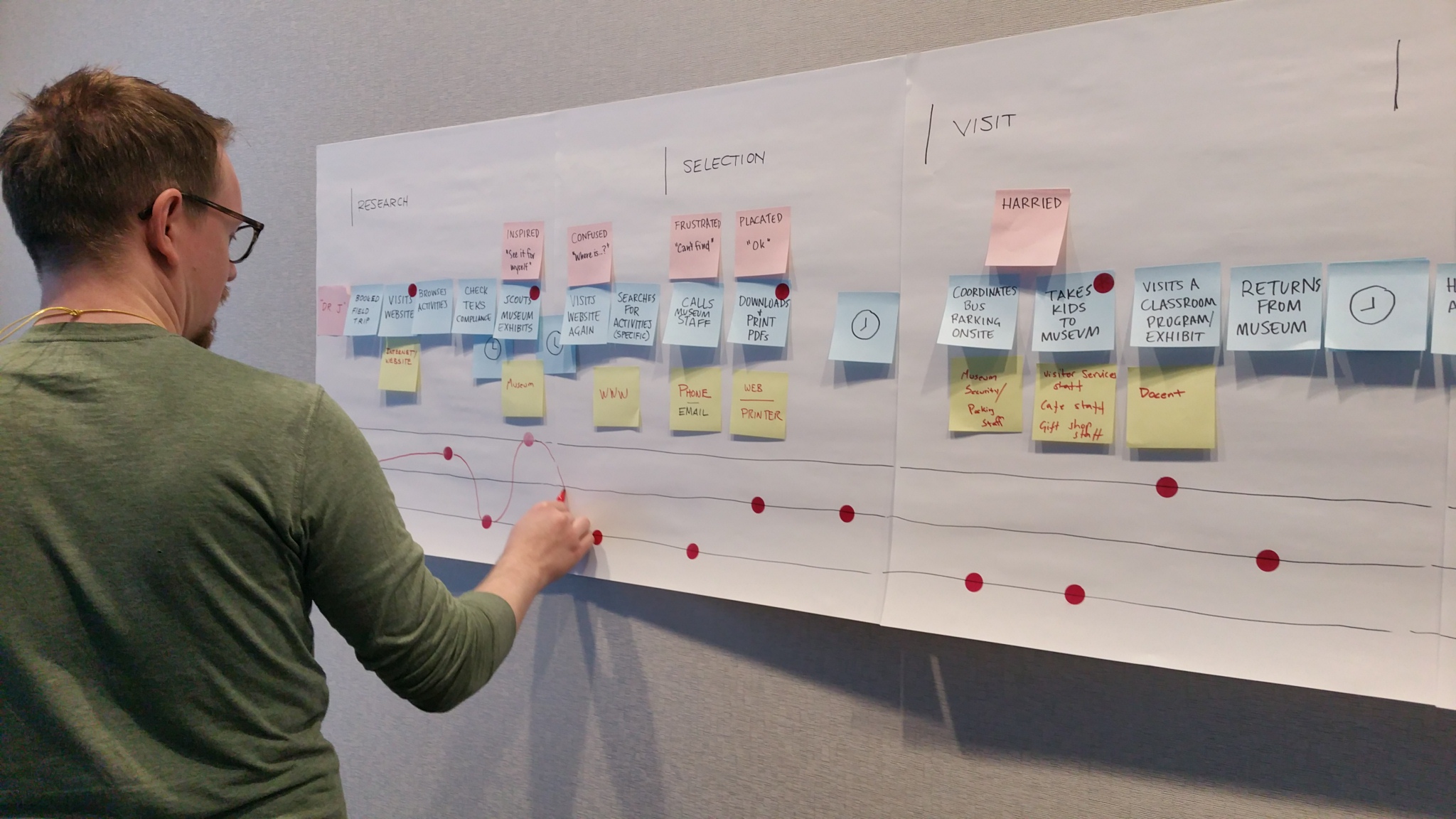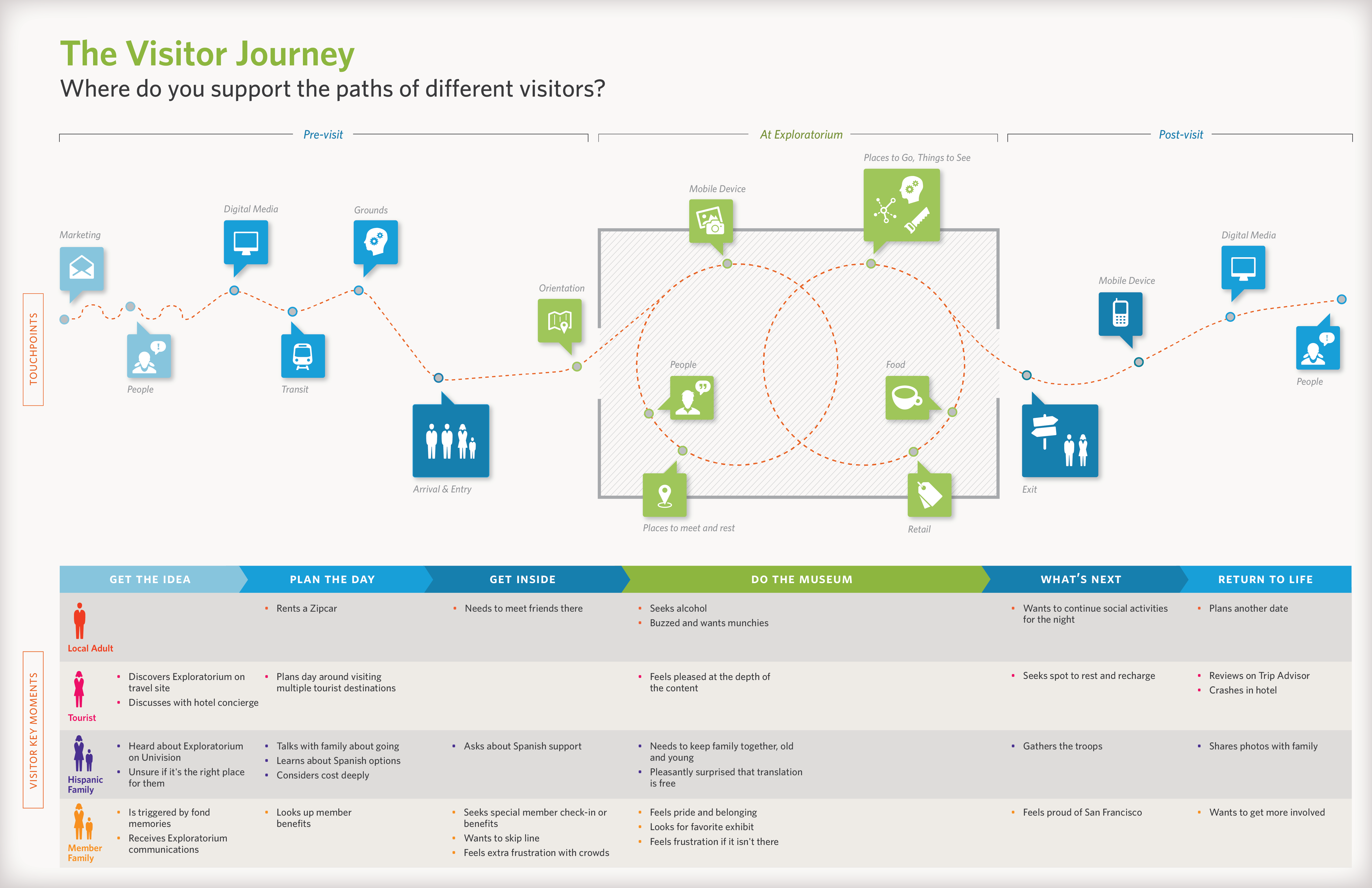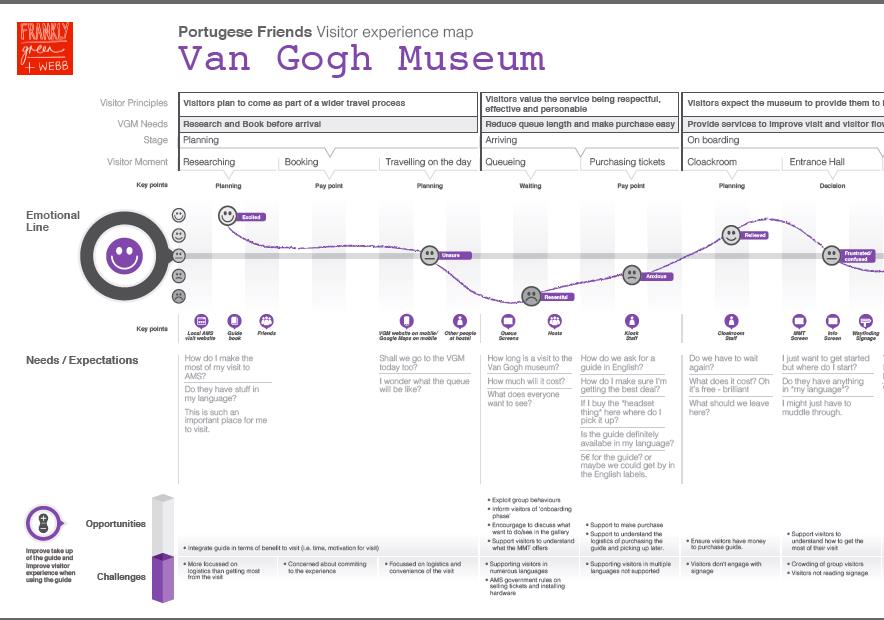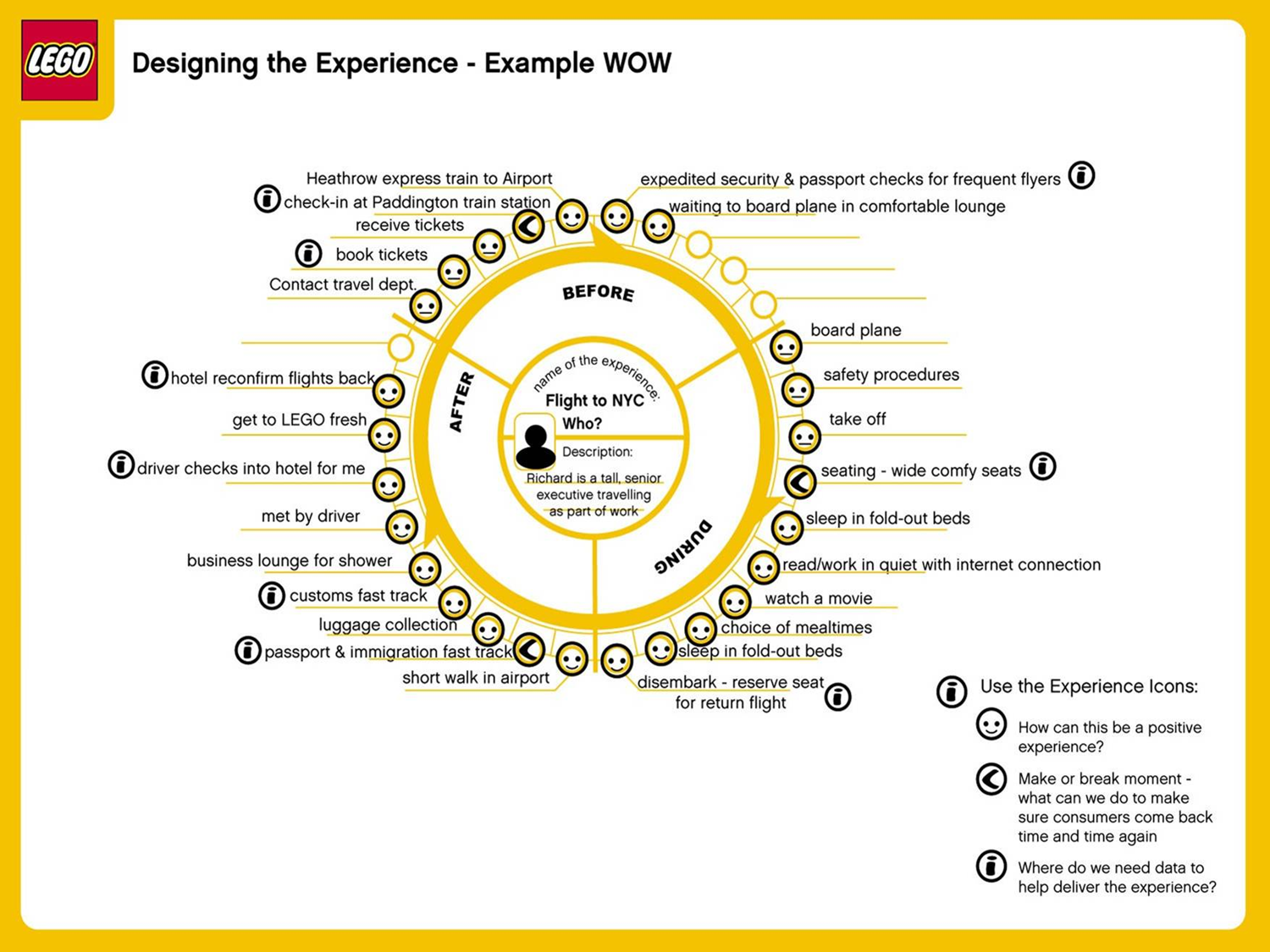Conxa Rodà

Visitor Journey Mapping workshop offered by Allegra Burnette and Liz Neely at Museums and the Web 2017. Photo: Conxa Rodà
In museums and organisations we often talk of the need of better knowing our visitors, our users, with the aim of offering them a better service, matching the needs and expectations of the public and, all in all, enriching the experience.
Beyond surveys, visitor studies, A/B testing, defining personas, analysing data, etc., what can provide the most valuable knowledge is the so-called Visitor Journey Mapping. Analyzing the interaction with the museum across all channels to see how can we make it better. Bearing in mind that the Visitor Journey is multi-dimensional nature and non-linear, as stated in this article of the Harvard Business Review.

Exploratorium, UX Map. Source: www.creativebloq.com/netmag/expert-guide-experience-mapping-71412427. Click to enlarge
The map identifies the steps that users follow to get what they want and the interactions that affect each step are analysed, as well as the emotional experience, the level of satisfaction and frustration. The journey map documents the experience of the visit from the point of view of the visitors. In this way we can know, for example:
-the steps the visitor takes to find the information, plan the visit, buy tickets, get to know what’s on, participate in an activity, move around the galleries, and find out more about the works.
-what is needed in each step
-touchpoints involved, interactions made
-what results are obtained
-if there are any gaps between needs and offer
-what improvements we should introduce. Sometimes, minor changes can have a major impact on usability, for example.
If we apply the concept of journey, thinking journey first, we will no longer design disconnected and separate initiatives (an app here, a newsletter there), but we will develop integrated solutions through various physical and digital channels so as to provide an enriching, consistent, personalised and contextualised experience.
Catherine Devine, Chief Digital Officer of the American Museum of Natural History in New York, said at the Museums and the Web Asia 2015 conference “Thinking in terms of journey affects how you think about everything: channels, roadmaps, project features, museum’s systems architecture, content strategy, development, design, testing”. All together with an integral vision, one that combines analogical and digital. With a journey that covers everything before, during and after the visit.
At our museum we were happy to welcome Allegra Burnette this June, to talk about Visitor Journey Mapping. We include here some of the key points that she elaborated:
- To understand the visitor’s journey is important because:
- Customer perceptions are based on how well we meet their needs
- Journey maps help visualize when and where we are meeting customer’s needs and where we are not
- We cannot manage what we don’t know or can’t see. Making assumptions (or guessing) about visitor experience doesn’t work
- The mapping process brings together cross-departmental agents
- Satisfaction may involve loyalty, visit repetition or recommendation.
- Visitor experience has different levels and goes across many touchpoints. It’s crucial to address the visitor experience ecosystem. The user ecosystem includes visitors (companions, needs, expectations, actions, behaviours), employees (as well as partners, processes, tools, policy) and the operating environment (laws, regulations, competitors, trends, weather).

Source: https://www.linkedin.com/pulse/4-steps-mastering-customer-experience-pathway-amber-bezahler . Click to enlarge
- Each visit is different. Visitors have specific not generic journeys. Mapping the journey will help us see what the visitor sees. The map will be useful if we define visitor or persona descriptions, build a narrative story with moments of truth, pain points and emotions integrated and add contextual details.

Font: Frankly, Green + Web Keeping it simple (pdf). Click to enlarge
We can try to trace the route of different profiles and analyse what they need: a teacher preparing the visit to the museum with a group of schoolchildren, a tourist who is an art lover, a group of friends, a family, a couple of visitors to a temporary exhibition, a participant in an activity, a retired couple.
Try to capture the emotions at each step: anticipation, trust, fear, surprise, anger, delight. Knowing each journey allows to detect which improvements need to be made to improve the visitor experience in the museum.
Journey Mapping in 5 steps
- Collect internal insights
- Develop initial hypotheses
- Research process, needs and perceptions
- Analyse customer data
- Map the journey:
- capture all of the steps the visitor takes, including time spent waiting.
- capture all touchpoints the visitor interacts with along the journey
- capture the emotions of the visitor at each step
- identify the moments of high value and high importance for the user
- divide the journey into stages, naming each stage (buy, download, etc.)
As Allegra said, a good visitor experience drives retention, engagement and advocacy. Three precious reasons why researching ways to improve the experience is key for any organisation today.
If we collaborate working on the visitor map, as well as detecting opportunities for improving the experience, we will be able to share knowledge between the various stakeholders and teams involved in the building of the visitor experience. Our visitors will end up winning and our internal organisation too.
If you are a museum, how do you think you could use journey mapping in your museum? If you are visitors, what pain points do you find that are often a difficulty in your visit?
Recommended links
Visitor journey mapping at ACMI, Seb Chan
How the Smithsonian Built their Journey Map, Samir Bitar
Customer Journey Maps – the Top 10 Requirements (Revisited), Heart of the Customer
4 Steps to Mastering the Customer Experience Pathway, Amber Bezahler
Customer Journey Mapping, Pinterest board
Anatomy of an experience map, Coursera video, 10min
Co-directora del Curs d'Estratègia Digital_UOC_Museu Nacional d'Art de Catalunya
Co-directora del congrés CIMED de Museos y Estrategias Digitales








